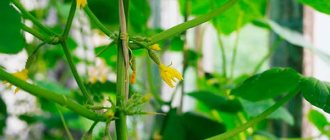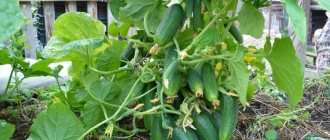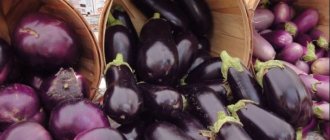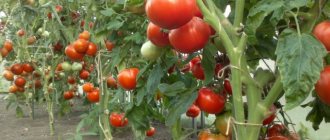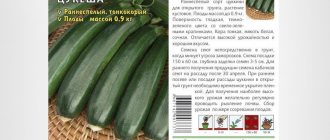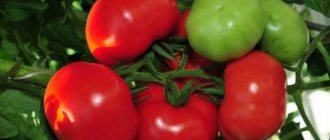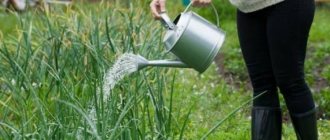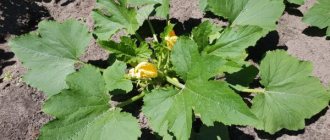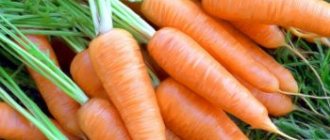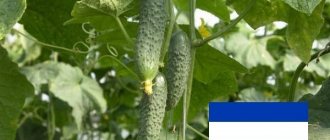The best varieties of cucumbers for open ground
Do you want to get a significant harvest of delicious fruits, so that you can eat them fresh and prepare preparations for the winter? Do not skimp on seeds, choose the best varieties and hybrids only of the highest class, from proven seed companies.
A huge selection of self-pollinating hybrids and varieties of cucumbers for growing in open ground allows gardeners to experiment, select and identify varieties that are most suitable for climatic conditions, soil, and taste preferences.
Meet this bright representative, perfectly suited for planting in garden beds.
VELOX F1
A stress-resistant hybrid - suitable for harvesting in early and mid-early periods, it pleases with a high, stable yield of excellent dark green tuberous gherkins with excellent marketability and taste. Exceptionally good for fresh consumption, suitable for canning. The plant is of medium height, female type of flowering, pollination is not required.
The best varieties and hybrids of open ground cucumbers: Bochkovoy, Vesyolie Gnomiki, Vesyolie guys, Harmonist, Gerasim, Russian size XXL, Velox, Vernissage, Prestige, Madrilene, Barguzinsky sable, Zasolich, Claudine, Connie, Manchurian Emperor, Siberian runner, Salty ears, Siberian Stream, Loyalty, Envy, General's, Green Avalanche, Claudia, Millionaire, Partner, Niagara Falls, Tufted Splendor, Devotion, RMT, Sanka's Love, Perfection itself.
They are characterized by:
- versatility - suitable for fresh consumption, pickling and canning;
- form green fruits, without bitterness, calibrated and even, ranging in size from 9 to 14 cm, with excellent taste,
- high yield - up to 13 kg/m2;
- resistance to diseases, sudden temperature changes and darkening.
Varieties for the greenhouse
Greenhouse varieties are in demand in many regions of Russia. In cold summers, this is the only opportunity to get homemade cucumbers. But even in warm areas, growing in a greenhouse helps extend the fruiting time.
Alekseich F1
Cucumbers grow quickly in greenhouses, even without heating, if the soil temperature has reached 15 °. The soil required is light, with full aeration. The node contains 2-3 fruits. The cucumbers ripen at the same time, and 13-14 kilograms are removed from the bush per season.
Self-pollinating cucumber seeds for pickling
Childhood. I remember the noisy market, the screams of inviting traders and the amazing smell of garlic, dill, anise, cloves, thyme, caraway... and a whole row of barrels with vigorous, crispy, pimply cucumbers. With a crust of black bread, mmmm... it seemed like there was nothing tastier in the world! And now, not a single holiday is complete without this wonderful snack. And salads, vinaigrettes, pizza, pickles, solyankas - it’s impossible to imagine without this vegetable.
An experienced housewife knows that not every variety is suitable for pickling. Why do some jars “explode” during one pickling process, while others last until next year? What is the reason? Let's figure out together which varieties are best to plant.
Thanks to the work of breeders, self-pollinating hybrids have appeared that guarantee a harvest in the open ground under any weather conditions. Such plants do not need bees and pollinating insects. The peculiarity of these cucumbers is that in one flower they have both pistil and stamens, which promotes the process of self-pollination.
BARREL F1 - CHAMPION for pickling.
Cucumbers are completely without bitterness, they delight with excellent taste when salted and pickled, and they are also well suited for salads.
Plants are quite disease resistant. It begins to bear fruit by 40-45 days, with an excellent harvest of medium-sized (9-11 cm), medium-lumpy greens with dark thorns.
The best pickling varieties: Peacock, Hummingbird, Zasolkino Village, Petersburg Express, Adam, Karaoke, Kibria, Ecole, Zanachka, Lady's Fingers, Zozulenok, Zozulya, Sanka's Love, Karelian Cones, Shosha, Cascade, Miracle Bouquet, Lightly Salted, Krepysh, Cheerful Neighbors , Zakusonych, Come on, have a bite, Tatar.
What are self-pollinating cucumbers, what are their advantages and growing features?
By the way! It is not entirely correct (more precisely, it is incorrect in principle) to call parthenocarpic cucumbers self-pollinating. After all, in order to be self-pollinating, flowers must have both a pistil and stamens (for example, like peppers or tomatoes). The cucumber does not have bisexual flowers: they are all either female or male (empty flowers) . In other words, there are no literally self-pollinating cucumbers.
It is more correct to call them “not requiring pollination .
But tell me what is written in this way on the packaging itself. Indeed, but they write this way for amateurs, trying to convey information to the consumer as simply as possible.
Parthenocarpic cucumbers have only female flowers and are able to develop into fruits without any insect pollination, while growing without seeds inside the greens.
Advantages of growing parthenocarpic cucumbers:
- Ideal for growing indoors - in a greenhouse , on a balcony and on a windowsill at home , where it is very difficult for pollinating insects (bees, bumblebees) to enter.
Note! Most parthenocarpic varieties are also suitable for growing in open ground.
- As a rule, they have fruits of the same size and color, genetically without bitterness, and they do not turn yellow (since seeds do not ripen in them).
However, these are rather the advantages of cucumber hybridity.
Features of growing parthenocarpic cucumber hybrids:
- Since parthenocarpic hybrids have only female flowers , which means a very high load on the bush , such plants require shaping - normalizing the number of fruits, blinding the lower nodes, etc.
By the way! Read more about the formation (picking, pinching) of cucumbers in this article .
- Shaking female flowers so that they “self-pollinate” is useless and pointless.
Interesting! The meaning of self-pollination is that pollen from its own flower is poured onto its own pistil and germinates, forming an ovary with seeds.
- Parthenocarpic and bee-pollinated cucumbers cannot be grown in the same greenhouse (bed)
, otherwise, with such joint planting, the greens will turn out crooked, ugly and, as a rule, pear-shaped (bottle-shaped). The thing is that pollinating insects (bees, bumblebees) will also pollinate the flowers of parthenocarpic cucumbers, which do not need it and will only do harm.
Alternative opinion: “The proximity of bee-pollinated cucumbers will not harm, but, on the contrary, will help the establishment of parthenocarpic varieties.
Their female flowers can set greens even without pollination, but completely normal fruits grow from pollinated ones.
And when parthenocarpics are “capricious” and drop their ovaries, pollination definitely helps.”
Video: parthenocarpic cucumbers, hybrids and GMOs
Seeds of early and mid-season cucumbers of Siberian selection for the Urals and Siberia
What a short summer, such cold days... this is about the climate in the northern and eastern regions of our country. However, cucumbers and hybrids of Siberian selection are adapted to both hot summers and stressful conditions of the northern regions. And with proper care, they grow well and produce high yields, both in greenhouses and in open beds in the Urals and Siberia.
Get acquainted with the seeds of early and mid-season varieties and hybrids and choose.
BARGUZIN SABLE - COLD-RESISTANT, early ripening (46-48 days), hybrid. It is perfectly adapted to open ground conditions, stress-resistant, and highly resistant to the main diseases of this vegetable. Zelentsy are cylindrical in shape, 7-8 cm long, weighing 50-60 grams, not prone to yellowing, and have exceptional pickling qualities. Fruits until late autumn, maintaining a magnificent sweet taste. The commercial yield of the hybrid is 15-18 kg/m2. Regular collection of fruits is necessary.
And this representative of mid-season varieties is GOOD IN SALAD AND IN SALTS!
Cucumber PICKED EARS.
Mid-season, with unsurpassed taste, the main direction of use is universal: pickling, canning, salad. The cucumbers are green, coarsely tuberous, with a small number of seeds, without bitterness.
The ripening period is 50-55 days, and the harvest period is quite long, right up to frost.
The plant type is parthenocarpic, produces fruits without pollination. High-yielding, up to 6 kg per bush. Shows good disease resistance.
Popular varieties of mid-season cucumbers : Guidon, Hero, Gunnar, Dirigent, Friendly Family, Duet, Esaul, Karlusha, Quartet, Pavlik, Russian style, Toropyzhka, Crispy Cellar, Samurai, Salinas, Russian style, Mischievous, Leader, Kuzya, Quartet, Vigora , Lucky, Cupid 1801, etc.
For different zones of the Urals, with their variable climate, the large elongation of mountains from north to south, and the proximity of the Arctic Ocean, varieties of Siberian vegetable selection were specially developed.
Meet the NEW!
OUR MASHA F1 is a short-fruited parthenocarpic. The fruit is dense, very beautiful, smooth, deep green. An early-ripening, productive hybrid, with a female type of flowering. The period from germination to harvest is 40-43 days. The plant is medium tall, 1.5-2m. The fruit is medium-tubercular, cylindrical, 8-10 cm long. With black simple pubescence, genetically without bitterness.
Cucumbers of Siberian selection for the Urals : Chic, Chernomor, Khrustichok, Fedya, Fason, Udalets, Tugarin, Twenty, Strelka, Sagittarius, Stakhanovets, Sonet, SV 4097 CV, Sarovsky, Russian feast, Robin Hood, Fan, Petrovsky, Petrukha, Pasalimo. Okhotny Ryad, Okunyok, Nezhenka, Natasha, Mini 7, Mix, Snowstorm, Meringue, Masha, Madita, Magdalena, Lisette, Little Raccoon, Beauty, Little Humpbacked Horse, Claudine, Quartet, Karin, Zador, Lark, Village Pickle, Grandfather, Dachny, German, Guidon, Merry Dwarfs, Magnificent Five, Vakula, Chipmunk, Barin, Aztec, Athos, Artist, Ardiya, Alex, Agathon.
The best varieties of cucumbers for Siberia : Avangard, Actor, Aladdin, Alex, Allure, Apogee, Dimka, Hedgehog, Groom, Bride, Obskoy, Postrelyonok, Prestige, Primadonna, Sashenka, Tanik, Champion Sedok, Chernomor, Shpingalet.
Open ground cucumbers for the Moscow region and central Russia
For the Moscow region with a moderate continental climate, transitional from mild European to sharply continental Asian climate, as well as for the central regions of Russia with long winters, short hot summers, long springs with returning colds and long, rainy autumns, it is very important to choose the right early ripening varieties for growing under open sky.
VELOX F1 is an energetic, strong, stress-resistant tumbler hybrid. Suitable for harvesting in early and mid-early periods, it pleases with a high, stable yield of excellent dark green tuberous gherkins with excellent marketability and taste.
HERMAN F1 is a very promising NEW product.
Parthenocarpic, early ripening, super-yielding hybrid. With proper agricultural technology, from 1 sq. m. you can get more than 20 kg of magnificent gherkins. Up to 12 greens develop simultaneously in one node. The fruits are genetically without bitterness, ideal size for canning (8-10 cm).
Productive varieties for the Moscow region and the middle zone : Alpaca, Artist, Atik, Baron, Bouquet, Spring, Vivat, Harmony, Count, Dachny, Village Pickle, Preschoolers, Lark, Gendarme, Karin, Kesha, Little Humpbacked Horse, Crispina, Baby Raccoon, Marinda, Summer Resident's Dream, Mini, Sissy, Petrovsky, Admirer, Robber, Robin Hood, Russian Feast, SV 4097 CV, Sagittarius, Three Comrades, Tugarin, Khrustichok, Latch.
Bunch cucumbers with long fruiting
Bundle cucumbers are very different from other varieties in terms of flowering; they form several ovaries in each internode, which, as they grow, turn into entire “bouquets” of fruits. Consistently high yield, absence of barren flowers, high disease resistance, excellent taste. During the long period of fruiting, they produce a harvest of 7 to 13 kg per bush.
Features of care:
- Regular (once/week) feeding for numerous ovaries.
- Daily harvest.
THE ENVY OF EVERYONE F1 is a self-pollinating, high-yielding hybrid for universal cultivation. Gherkin type 9-12 cm, resistant to adverse weather and disease. Bears fruit consistently in any conditions until the first frost.
MAGDALENA F1 (new) - parthenocarpic does not need pollination by bees, resistant to diseases. Cucumbers with large tuberculate fruits, without bitterness. The plant is of medium thickness with little shoot formation, open, which greatly facilitates care and harvesting. With sufficient nutrition, the hybrid forms 6 - 7 fruits on each node. The fruits are very dense, rich dark green in color, cylindrical in shape, intended for fresh consumption and canning.
The best self-pollinating bunch greens : Cheerful gnomes, All in a bunch, Espagnolette, Bunch landing, Kuzya, Fidelity, General F1, Bunch splendor, Herman, Mighty bunch, Smak, Russian feast.
High-yielding gherkin cucumbers
Small crispy cucumbers - gherkins (5-7 cm), pickles (5-9 cm) - are great for pickling and preservation. They are very attractive due to their taste, crunch and appearance.
A striking representative is the KOLIBRI F1 , calibrated, regular in shape, smooth, unlike all the varieties and hybrids existing today: gardeners are delighted - “Is this possible!”
This self-pollinating early ripening baby (5-8 cm), weighing (60-80 g), in early spring, when there is snow outside, will delight you on loggias and verandas. And in the summer in open beds and greenhouses. The internodes of the main vine are very short. From 2 to 8-10 ovaries are formed in the nodes. The taste and pickling qualities are high. The hybrid is resistant to most diseases. Planting density in open ground is 4-5 plants per 1 square meter. m.
Useful tips
Experience helps to achieve good yields, so you should take the advice of gardeners and get excellent results from the first planting. Secrets of growing self-pollinating cucumbers in open ground:
- One of the planting methods is seedlings. To obtain seedlings, prepare peat pots and plant the seeds to a depth of 2 cm. Strong sprouts will appear in about 20 days. The optimal time for transplanting into open ground is determined by the established temperature regime in the region of residence. If the day is consistently warm and the air warms up to a temperature of at least 15C°, it’s time to plant cucumbers.
- Loamy soil is well suited for hybrids. When choosing a site where to plant seedlings, you should remember what vegetables grew there last year. It is ideal to plant an area where potatoes, onions, peppers or cabbage previously grew.
- The soil should be fertilized, moist and well loosened. When planting, you must carefully handle the root system, trying not to damage it.
Related article:
I plant cucumbers using the method of a Belarusian aunt
- To prevent the plant from dying from rot, it is necessary to periodically treat it with a fungicide.
- It is advisable to water the bushes in the evening, as soon as the sun sets.
- Pollinator cucumbers for open ground do not need to be specially planted. Parthenocarpic varieties do not require pollen to produce an ovary; they bear fruit well without outside interference.
- When conducting “experiments” with varieties, it is better to refrain from planting parthenocarpic and pollinated cucumbers in the same bed. The result of such diversity will be the appearance of a low-quality product.
Initially, the purpose of creating parthenocarpic cucumbers was to grow fruits in greenhouses, on the balcony, where insects cannot penetrate. However, taste qualities, resistance to diseases and various weather conditions have made self-pollinating cucumbers welcome guests in the garden beds of summer residents and land owners. The variety of varieties allows you to choose a hybrid for any climate.
Bush cucumbers in open ground
Bush cucumbers look very attractive: compact bushes about half a meter high, they are easy to care for and easy to harvest. These varieties are early ripening and form numerous ovaries.
The most famous bush varieties:
GREAT - early ripening (40-50 days), bee-pollinated, for open ground, medium-climbing. Resistant to olive spot, has high cold resistance. The fruits are finely tuberculate, white-thorned, 10-13 cm long, weighing 140 g.
NEZHINSKY 12 is the best for pickling for growing in open ground. Unpretentious and disease resistant. The greens are short, elongated-ovoid, large-tubercular, black-spiked, 10-12 cm long, weighing 80-110 g. The pulp is crisp, of excellent taste. Good pollinator. Resistant to olive spot and bacteriosis.
COMPETITOR US SB is an early ripening (46-52 days from sowing to fruiting) bee-pollinated variety, intended for cultivation in open ground and under temporary film covers. The plant is highly branched, the length of the main vine is 140-200 cm. The greens are oval-cylindrical, green with longitudinal light stripes, coarsely tuberous, black-thorned, very tasty and crunchy. Fruit length 10-14 cm, diameter 3.5-5 cm, weight 65-95 g. Resistant to a range of diseases. Ideal for canning and pickling. Productivity up to 7.8 kg/m2.
VYAZNIKOVSKY 37 - early ripening, bee-pollinated, for open ground and film shelters. The fruits are finely tuberculate, light green, 9-11 cm long, very tasty and aromatic. Value: high yield, good adaptability to different climatic conditions. Excellent pickling qualities.
The best varieties of bush cucumbers : Bush, Bush Gift, Mikrosha, Malysh F1, Korotyshka F1, Ant F1, etc.
Did you like the article? Then click “Class” and share on social networks. Thank you for being with me!
Author of the publication
offline for 2 weeks
Table on the main characteristics of some varieties
For clarity, we have prepared a comparative table on the main characteristics of some early greenhouse cucumber hybrids.
| Name | Ripening time, days | Productivity, kg/m2 | Zoning | Disease resistance |
| "Anyuta F1" | 38-40 | 12-16 | All regions | Cucumber mosaic virus, olive spot, powdery mildew |
| "Emelya F1" | 39-43 | 12-16 | All regions | Cucumber mosaic virus, olive spot |
| "Courage F1" | 40-43 | 16-18 | All regions | Cucumber mosaic virus, olive spot, powdery mildew |
| "Makar F1" | 41-44 | 12-15 | All regions | Cucumber mosaic virus, olive spot |
| "Martha F1" | 42-45 | 12-15 | All regions | Cucumber mosaic virus, olive spot |
| "Ant F1" | 37-38 | 10-12 | 1-7 light zones | Cucumber mosaic virus, olive blotch, common and downy mildew |
| "Paratunka F1" | 42 | 12,7 | 1-7 light zones | Olive spot, powdery mildew |
| "Suomi F1" | 38 | 14,2 | 1-7 light zones | Olive spot, powdery mildew |
Now let’s move on to a detailed description of the indicated hybrid varieties of cucumbers for the greenhouse - “self-pollinating”, or rather parthenocarpic.
